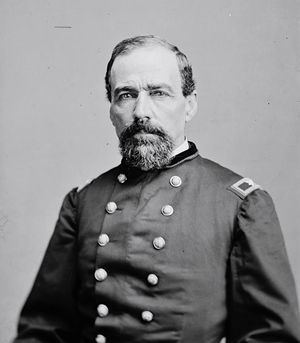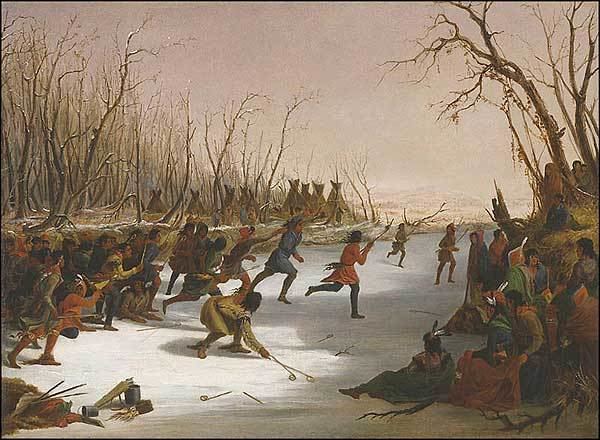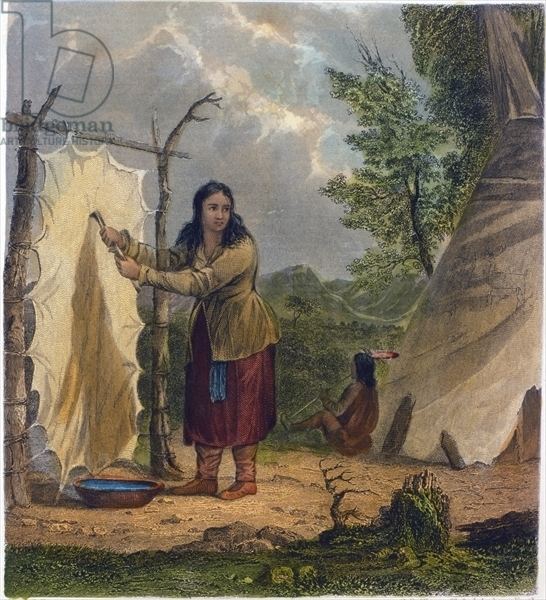Nationality American Known for Painting | Name Seth Mary Role Artist | |
 | ||
Born January 24, 1808 ( 1808-01-24 ) Brunswick, Maine Died August 31, 1875, Washington, D.C., United States Spouse Mary H. Eastman (m. 1835–1875) Education United States Military Academy Books Aunt Phillis's Cabin People also search for Mary H. Eastman, Robert Walter Weir, Henry Knox | ||
Legacy Letters - Eastmans
Seth Eastman (1808–1875) and his second wife Mary Henderson Eastman (1818 – 24 February 1887) were instrumental in recording Native American life. Eastman was an artist and West Point graduate who served in the US Army, first as a mapmaker and illustrator. He had two tours at Fort Snelling, Minnesota Territory; during the second, extended tour he was commanding officer of the fort. During these years, he painted many studies of Native American life. He was notable for the quality of his hundreds of illustrations for Henry Rowe Schoolcraft's six-volume study on History of Indian Tribes of the United States (1851–1857), commissioned by the US Congress. From their time at Fort Snelling, Mary Henderson Eastman wrote a book about Dakota Sioux life and culture, which Seth Eastman illustrated. In 1838, he was elected into the National Academy of Design as an Honorary Academician.
Contents
- Legacy Letters Eastmans
- Early life and education
- Career
- Works
- Marriage and family
- Mary Henderson
- References

When the Eastmans were based in Washington, DC before the American Civil War, Mary entered the literary "lists" and wrote the bestselling Aunt Phillis's Cabin: or, Southern Life As It Is (1852). Defending slaveholders, she responded as a Southern planter to Harriet Beecher Stowe's anti-slavery work, Uncle Tom's Cabin. Mary Eastman's novel was one of the most widely read anti-Tom novels and a commercial success, selling 20,000–30,000 copies.
Seth Eastman retired as a Lieutenant Colonel and Brevet Brigadier General for disability during the American Civil War. He was later reactivated when commissioned by Congress to make several paintings for the US Capitol. Between 1867 and 1869, Eastman painted a series of nine scenes of American Indian life for the House Committee on Indian Affairs. In 1870 Congress commissioned Eastman to create a series of 17 paintings of important U.S. forts, to be hung in the meeting rooms of the House Committee on Military Affairs. He completed the paintings in 1875, and eight still hang in the Senate Wing.
Early life and education

Seth Eastman was born on January 24, 1808 in Brunswick, Maine, the eldest of 13 children of Robert and Sarah Lee Eastman. He persuaded his parents to let him go into the military. Sixteen when he entered the United States Military Academy at West Point, New York in 1824, he graduated in 1829 to enter the Army as a second lieutenant in the 1st Infantry Regiment.
Career

Eastman made his career with the U.S. Army. He became an accomplished artist and used his skills in early mapmaking and recording Army activities. In 1830 he was assigned to Fort Snelling near what became Minneapolis in present-day Minnesota. A large installation with 20 officers and up to 300 enlisted men, the fort was deep in American Indian territory on the upper Mississippi River. While stationed there for three years, Eastman learned the Sioux language and captured many scenes of American Indian life in the territory. He painted and sketched prolifically.
From 1833 to 1840, Eastman was assigned to West Point, where he taught drawing (used for mapmaking). In 1841 Eastman was appointed commander of Fort Snelling and returned to Minnesota. While stationed there for several years with his second wife and growing family, he continued to study and paint Native American life. Their son Frank was born in 1844, daughter Virginia in 1847, and son John McC. in 1849. He learned much about the Dakota culture particularly. He painted and drew pictures of the Sioux villages of Kaposia and Little Crow, as well as settlements in present-day Scott, Wabasha, and Winona counties.
Hearing that Congress had authorized a study of Indians by the explorer and former US Indian agent Henry Rowe Schoolcraft, Eastman asked to be assigned as illustrator. Finally in 1849 at age 41, he had the chance. Captain Eastman and his family settled in Washington, where their son Harry was born in 1854.
Eastman began to work on what would be hundreds of pictures to illustrate the massive Schoolcraft study, published in six volumes from 1851–1857.
It was a monumental work that for Eastman consumed five years. During that time, he completed some 275 pages of illustrations to accompany Schoolcraft’s six-volume Information Regarding the History, Conditions, and Prospects of the Indian Tribes of the United States. When Volume I came off the press in early 1851, Eastman could take just pride in his accomplishment. His precise and exquisitely executed illustrations of Indian life, painted almost entirely from his frontier sketches, proved that he was singularly the best-qualified person in the country to undertake this epic work.
Eastapman's work, which complements the work of Hudson River School landscape painters of his era, re ears how images of the landscape supported and extended the United States' work of empire building. That is, the images of Americans' possession and domination of the landscape supported their mission of empire. Eastman's images recorded the empire's reach into the northwest and helped spur it on. In this regard, Eastman was working on a similar mission to the landscape painters who were working from private commissions. Near the end of his career, at the rank of Lieutenant Colonel, Eastman was commissioned by the House Committee on Military Affairs to paint pictures of seventeen important forts. He completed these paintings between 1870 and 1875. One controversial painting was Death Whoop, which was twice removed from display because of negative comments from viewers, as it portrayed an Indian's scalping a white man. In the 1930s the paintings were displayed again in the Capitol Building.
Works
Marriage and family
During his first posting at Fort Snelling near what is now Minneapolis, Seth Eastman in 1830 married Wakan Inajin-win (Stands Sacred), the fifteen-year-old daughter of Cloud Man, a Dakotah (Santee Sioux) chief of French and Dakota ancestry. Eastman was reassigned from Fort Snelling in 1832, soon after the birth of their daughter Winona (meaning First-born daughter). He declared his marriage ended when he was reassigned, as was typical of many European-American men who abandoned Indian women and their children. His daughter Winona was also called Mary Nancy Eastman. Later she was named Wakantakawin in the Sioux tradition of marking life passages.
She married a Santee Sioux and had five children, dying at the birth of the youngest, later known as Charles. After adopting Christianity, her husband and two of their surviving sons took the Eastman surname. Winona's eldest son Rev. John (Marpiyawaku Kida) Eastman became a Presbyterian missionary at Flandreau, South Dakota. Her second son Dr. Charles Eastman was the first Native American certified as a medical doctor, after earning his degree at Boston University. He married a European-American woman, Elaine Goodale, and later worked for Native American rights. He also wrote several popular books about growing up in Dakota culture; some me were translated into European languages and published on the Continent.
In 1835, while stationed at West Point, Seth Eastman married a second time, to Mary Henderson, daughter of a surgeon there. She and her family were from Warrenton, Virginia. They had five children together, some born during Eastman's extended assignment in the West when he returned to Fort Snelling for seven years as commanding officer. The couple were both interested in Dakota culture. Mary Eastman collected traditional stories and legends during their time at Fort Snelling, as preparation for a later book which her husband illustrated.
Mary Henderson
Mary Henderson was born in Warrenton, Virginia in 1818 to a family of the elite planter class. She moved with her family to West Point, New York when her father was assigned as a surgeon at the military academy. There she met and married Seth Eastman in 1835 when she was seventeen and he was twenty-seven. As Henderson noted in her novel Aunt Phillis's Cabin (1852), she was a descendant of the First Families of Virginia and had grown up in slaveholding society.
In 1841 Captain Eastman was appointed commander of Fort Snelling. He and his family lived there for years. This was when Henderson Eastman wrote Dacotah, or Life and Legends of the Sioux Around Fort Snelling (1849), which Seth Eastman illustrated. She used her time at Fort Snelling to record and preserve the local culture. Among the legends she allegedly collected from the Dakota was a version of the death of the lovelorn Chief's daughter, "Princess Winona." However, at that time in history, "Winona" which means first born was not in use as a proper name, and the Dakota do not use European titles of royalty. She sent her book to the US Congress in 1849; it is online on Project Gutenberg.
After the Eastmans returned to the East, they lived in Washington, D.C. In the years of tension before the American Civil War, many writers published novels that dealt with each side of the slavery issue. After the stir caused by Harriet Beecher Stowe's anti-slavery Uncle Tom's Cabin, Mary Henderson Eastman defended southern slaveholding society by writing Aunt Phillis's Cabin: or, Southern Life As It Is (1852). It sold 20,000–30,000 copies, making it a bestseller and one of the best-known of the anti-Tom novels produced in that period.
Works
Mary Eastman wrote many of the entries, mostly about Indian life. Her articles were collected and republished the following year under the title below.
